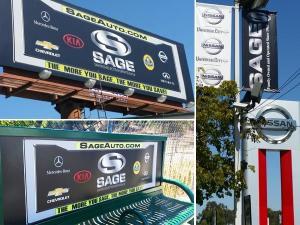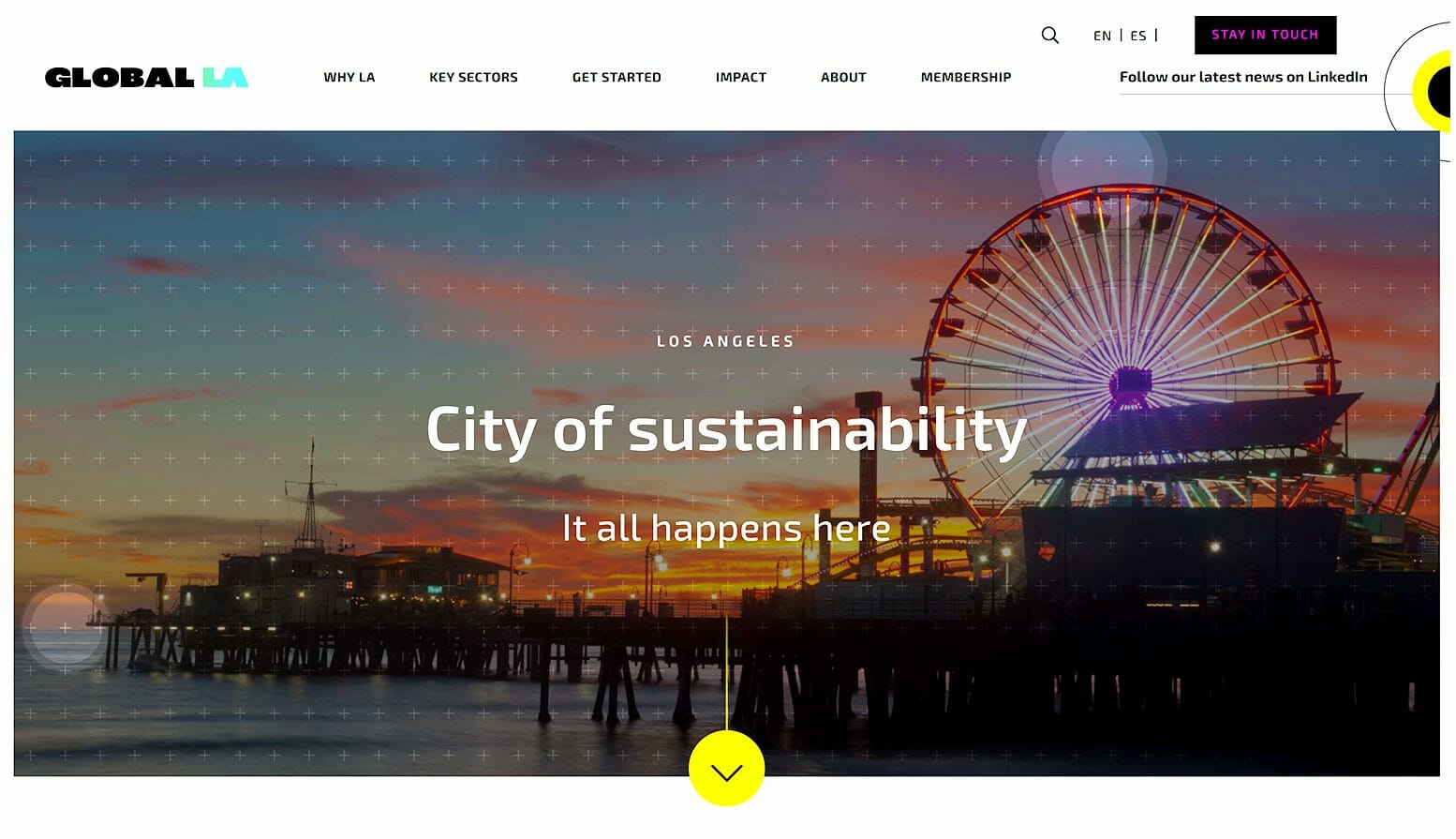28 Feb ‘25
Why Does Brand Recognition Help Businesses?
28 Feb ‘25
In: Branding & Visual Design, Business, / By: Heather Richman
We all know the saying, “Don’t judge a book by its cover?” Well, in the business world, that’s exactly what people do! Your brand is the face of your business, and we all know that first impressions matter. Why Does Brand Recognition Help Businesses? Let’s break it down.
Brand recognition is SO much more than just a catchy logo or a cool color scheme. It’s about creating a vibe, a feeling, an experience that makes your customers say, “OMG, I love this!”
Why is that so important? Read on and find out.
Key Takeaways
- Trust & Credibility: Recognizable brands build trust and feel like old friends.
- Sales & Revenue Growth: Familiarity leads to sales, repeat business, and happy bank accounts.
- Customer Loyalty: Strong brands create raving fans who can’t wait to tell the world about you.
- Competitive Advantage: Brand recognition helps you shine in a sea of competitors.
4 Major Reasons Why Brand Recognition Helps Businesses
1. Building Trust and Credibility:
Think about your best friend. You trust them, right? You know what to expect from them, and you feel comfortable sharing your deepest secrets (and maybe even your fries). That’s the kind of relationship you want to build with your customers. When they recognize your brand, they instantly feel like they know you, and that familiarity breeds trust. (Harvard Business Review on Brand Trust)
- Example: Consider the iconic golden arches of McDonald’s. Even without seeing the full restaurant, the symbol alone signals a familiar and predictable experience. This familiarity fosters trust and encourages patronage.
2. Driving Sales and Revenue:
Let’s be real, we all want to make money, right? Well, brand recognition is a major driver of sales. When customers are faced with a choice between your brand and a brand they’ve never heard of, who do you think they’re going to choose? (Hint: It’s not the stranger!)
- Repeat Business: Loyal customers are like gold dust. They keep coming back for more, and they tell their friends about you. Brand recognition is the key to building that kind of loyalty.
- Marketing Magic: When your brand is well-known, you don’t have to shout as loud to get noticed. Your customers already know who you are and what you’re about, which means you can spend less on marketing and more on making them happy. (HubSpot on Brand Awareness)
3. Creating Raving Fans, Customer Loyalty and Advocacy:
Strong brands don’t just have customers, they have fans. These are the people who love your brand so much that they can’t help but tell everyone about it. They leave glowing reviews, they post about you on social media, and they become your biggest cheerleaders. Brand recognition is the foundation for building this kind of passionate community.
- Emotional Connection: Strong brands build emotional connections with their customers. This connection goes beyond the product itself, creating a sense of belonging and shared values.
- Social Proof: Social proof is crucial. When people see that others recognize and support your brand, they’re more likely to do the same.
4. Standing Out in a Crowd:
In a world of endless choices, it’s easy to get lost in the noise. But a strong brand helps you stand out from the crowd. It’s like having a spotlight shining on you, saying, “Hey world, look at me! I’m awesome!”
- Be the Go-To: Brand recognition makes you the obvious choice in your industry.
- Attract the A-Team: Want to work with the best of the best? A strong brand attracts top talent who are excited to be part of your journey. (LinkedIn Report on Employer Branding)
What is Brand Recognition?
Brand recognition refers to the ability of consumers to identify your brand through its visual and auditory elements without explicitly seeing your brand name. It’s about a customer’s ability to recognize a brand’s distinct attributes such as logos, slogans, colors, or packaging without needing to see the brand name itself. (TechTarget)
This recognition is a fundamental component of your overall brand strategy and plays a critical role in how consumers perceive and interact with your business.
The Elements of Brand Recognition
Effective brand recognition is built on consistent use of several key elements:
- Visual Identity: Your logo, color scheme, typography, and overall design aesthetic
- Auditory Cues: Jingles, distinctive sounds, or voice characteristics
- Taglines and Slogans: Memorable phrases that capture your brand essence
- Packaging: Distinctive product presentation that stands out on shelves
- Overall Experience: The consistent feeling customers get when interacting with your brand
A Harvard Business Review study of 597 corporate logos found that descriptive logos—those that clearly communicate what a brand offers—were generally more effective at promoting brand recognition than non-descriptive ones. (Investopedia) For instance, Burger King’s logo includes the word “burger” and visually represents a hamburger bun, making it immediately clear what the company sells.
Brand Recognition vs. Brand Awareness
While often used interchangeably, these concepts represent different aspects of your brand’s presence in consumers’ minds:
Brand recognition is about whether people can pick your company, products, and marketing elements out of a crowd, while brand awareness is a broader concept that encompasses recognition. (Rock Content) Think of brand awareness as knowing a brand exists, while brand recognition is the ability to identify specific brand attributes when encountered.
The relationship between the two is sequential—brand awareness typically comes first, followed by recognition, which can then develop into preference and loyalty as consumers have positive experiences with your brand.
Building strong brand recognition doesn’t happen overnight. It requires strategic planning, consistent execution, and patience. However, the rewards—increased customer trust, higher conversion rates, and long-term loyalty—make it one of the most valuable investments a business can make.
To learn more about developing effective brand recognition strategies, visit Forbes’ resource on brand building or explore case studies at the American Marketing Association.
How to Measure Brand Recognition
Measuring brand recognition is essential for understanding how effectively your branding strategies are working and where improvements can be made. By tracking the right metrics, businesses can quantify their brand’s impact and make data-driven decisions to enhance recognition in the marketplace.
Key Metrics for Measuring Brand Recognition
1. Brand Recognition Surveys
Brand recognition surveys are questionnaires designed to measure how aware your target audience is of your brand. These can be conducted with both existing customers and potential customers in your target market. (Coupler)
Some effective survey questions include:
- Recognition tests: Show your logo, packaging, or other brand elements and ask respondents if they recognize them
- Aided recognition: Provide a list of brands and ask which ones they’re familiar with
- Unaided recall: Ask questions like “Name the top three brands that come to mind when thinking about [your industry]” to measure if your brand comes to mind without prompting (Attest)
These surveys provide direct feedback on how memorable your brand is in consumers’ minds and can be implemented through tools like SurveyMonkey or Qualtrics.
2. Website and Search Analytics
Your digital footprint offers valuable insights into brand recognition:
- Direct Traffic: By analyzing your website analytics, businesses can see how much of their web traffic comes from direct entries. A high percentage of users directly typing your website URL indicates strong brand recognition.
- Branded Search Volume: This metric is a direct indicator of brand recall and recognition. High branded search volume shows you’ve made a strong enough impression for consumers to remember and seek you out specifically.
- Search Trends: Using Google Trends to track how search interest in your brand changes over time can reveal patterns and growth in recognition.
3. Social Media Metrics
Social platforms provide immediate feedback on how recognizable your brand is:
- Brand Mentions: Track your brand mentions to gain insight into who is talking about you online and how frequently. Brand mentions can include social media, websites, articles, or blogs.(Klipfolio)
- Social Engagement: The rate at which users interact with your content through likes, shares, and comments
- Follower Growth: Increasing followers suggests growing brand recognition
- Share of Voice (SOV): SOV gives you an idea of a brand’s visibility or exposure in a particular market or industry compared to competitors. A high share of voice can indicate that a brand is making a significant impact in the market.(Eskimi)
Tools like Sprout Social, Brandwatch, or Mention can help track these metrics effectively.
4. Customer Feedback and Reviews
More reviews, whether positive or negative, usually indicate higher awareness and stronger brand recognition in the market. Review platforms provide insight into how customers perceive your brand and whether they can identify your unique value proposition. (Coupler)
Look for brand-specific feedback in reviews to gauge how well customers understand your brand attributes.
5. Conversion Metrics for Brand Campaigns
The conversion performance of your brand ads has a direct relation to brand recognition. Users are more likely to click on ads from brands they’re familiar with than from unknown brands. (Coupler)
Metrics to track include:
- Ad Recall Rate: How many people remember seeing your ads
- Click-Through Rates (CTR): How many people click on your brand advertisements
- Cost Per Acquisition (CPA): How efficiently you can acquire new customers
Implementing a Brand Recognition Measurement Strategy
For effective measurement, consider these approaches:
- Set Clear Baselines: Establish your current standing to measure progress against
- Choose Relevant KPIs: Select metrics most aligned with your business goals
- Implement Consistent Tracking: Use both continuous tracking (monitoring metrics in real-time) and point-in-time measurement (reviewing at specific intervals like quarterly or yearly)
- Benchmark Against Competitors: Compare your brand recognition metrics to industry standards and direct competitors
- Use Specialized Tools: Invest in brand tracking software like Attest or BrandWatch for comprehensive monitoring
Remember that brand recognition doesn’t exist in isolation but works alongside other brand metrics. As Hubspot’s Brand Kit Guide notes, consistent application of brand elements across all touchpoints is essential for building recognition that translates to business growth.
By diligently tracking these metrics over time, you’ll gain valuable insights into how well your target audience recognizes your brand and identify opportunities to strengthen your brand’s position in the marketplace.
How to Build a Brand People Love
- Be Consistent (Like Your Favorite Netflix Show): Keep your brand identity (logo, colors, voice) consistent across all platforms.
- Create Awesome Content (Think Viral TikToks): Give your audience content they can’t resist sharing.
- Get Social (But Don’t Be a Stalker): Engage with your audience on social media and build genuine connections.
- Spread the Word (But Don’t Be Spammy): Get your brand featured in relevant publications and media. (PR Newswire on Press Releases)
- Be Amazing (Always): Provide exceptional customer service that makes people feel like VIPs.
The Bottom Line
Brand recognition is the secret sauce for building a business that people love. It’s about more than just looking good; it’s about creating a brand that connects with your audience on an emotional level. As noted by resources such as Forbes on Brand Recognition and Harvard Business Review on Customer Loyalty, focusing on creating a memorable and recognizable brand is a cornerstone of modern business strategy. So, go out there and make your brand unforgettable!
Want to Build a Brand That Rocks?
At Ripe Media, we’re passionate about helping businesses like yours create brands that people love. We offer a full range of branding services, from strategy development to content creation to social media management. Contact us to learn more about how we can help you achieve your brand goals.
Our services include:
- Brand Strategy & Development: We help you define your brand identity, messaging, and visual style to create a cohesive and compelling brand experience.
- Content Marketing: We create high-quality, engaging content that educates, entertains, and inspires your audience, building brand awareness and establishing thought leadership.
- Social Media Management: We develop and execute effective social media strategies to increase your brand’s visibility, engagement, and reach.
- Digital Advertising: We leverage targeted digital advertising campaigns to reach your ideal customers and drive brand awareness.
- SEO Optimization: We optimize your online presence to ensure your brand is easily discoverable by search engines, increasing organic visibility.
Whether you’re a startup looking to establish your brand or an established business seeking to revitalize your image, Ripe Media can help you achieve your brand recognition goals. Contact us to learn more about how we can help you grow your brand.
Why Does Brand Recognition Help Businesses FAQ
Q: How long does it take to build brand recognition?
A: Building strong brand recognition is an ongoing process that requires consistent effort. The timeline varies depending on factors such as your industry, target audience, and marketing strategies.
Q: What are the most effective ways to measure brand recognition?
A: You can measure brand recognition through various methods, including surveys, social media monitoring, website analytics, and brand tracking studies.
Q: Is brand recognition more important for B2B or B2C businesses?
A: Brand recognition is essential for both B2B and B2C businesses. While the strategies may differ, the fundamental principles of building trust and driving sales remain the same.
Q: Can a small business achieve strong brand recognition?
A: Absolutely! Small businesses can achieve strong brand recognition by focusing on niche markets, delivering exceptional customer service, and leveraging digital marketing strategies.
At an early age, Heather was fascinated by design and the effects of imagery on perception and emotion. Over time, these ponderings developed into creating art and studying printmaking, photography, and art history. For over fifteen years, she has built distinctive brand identities through print, web, and interactive work.
Heather is passionate about finding the right typeface, creating compelling designs, and wowing the client with her impeccable ability to visualize and verbalize a project’s goals. Her designs are like her laughs – irrefutable and infectious.
















